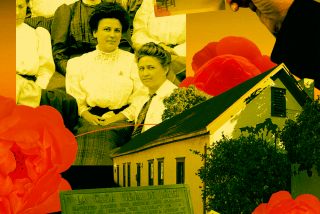The Missions of California
- Share via
By 1697, the Jesuit order, in cooperation with Spain, had begun to establish a chain of missions in Lower or Baja California. King Carlos III recalled the priests in 1767 and authorized the Franciscan order to establish a series of missions binding Upper or Alta California into one province. Now golden mustard blooms scattered by the gray-robbed priests grow along the mission path linking San Diego Bay to Sonoma, north of San Francisco Bay.
Missions were designed to indoctrinate the Indians to Christianity, while serving as self-contained and self-sufficient communities. At the same time, missions ensured Spain’s dominion and control over new territory. Father Junipero Serra personally established six missions: San Diego de Alcala, San Carlos Borromeo, San Luis Obispo, San Juan Capistrano, San Buenaventura and Santa Barbara.
San Francisco Solano: July 4, 1823
San Rafeal Arcangel: December 14, 1817
San Jose de Guadalupe: June 11, 1779
San Rafael San Francisco de Asis: October 9, 1776
Santa Clara de Asis: January 12, 1777
Santa Cruz: August 28,1791
San Carlos Borromeo de Carmelo: June 3,1770
San Juan Bautista: June 24, 1797
Nuestra Senora de la Soledad: Ocober 9, 1791
San Antonio de Padua: July 14, 1791
San Miguel Arcangel: July 25, 1797
San Luis Obispo de Tolosa: September 1, 1772
La Purisima Conception: December 8, 1787
Santa Ines: September 17, 1804
Santa Barbara: December 4, 1786
San Buenavertura: March 31, 1782
San Fernando rey de Espana: September 8, 1797
San Gabriel Arcangel: September 8, 1771
San Juan Capistrano: November 1, 1776
San Luis rey de Francia: June 13, 1798
San Diego de Alcala: July 16, 1769
More to Read
Sign up for The Wild
We’ll help you find the best places to hike, bike and run, as well as the perfect silent spots for meditation and yoga.
You may occasionally receive promotional content from the Los Angeles Times.






